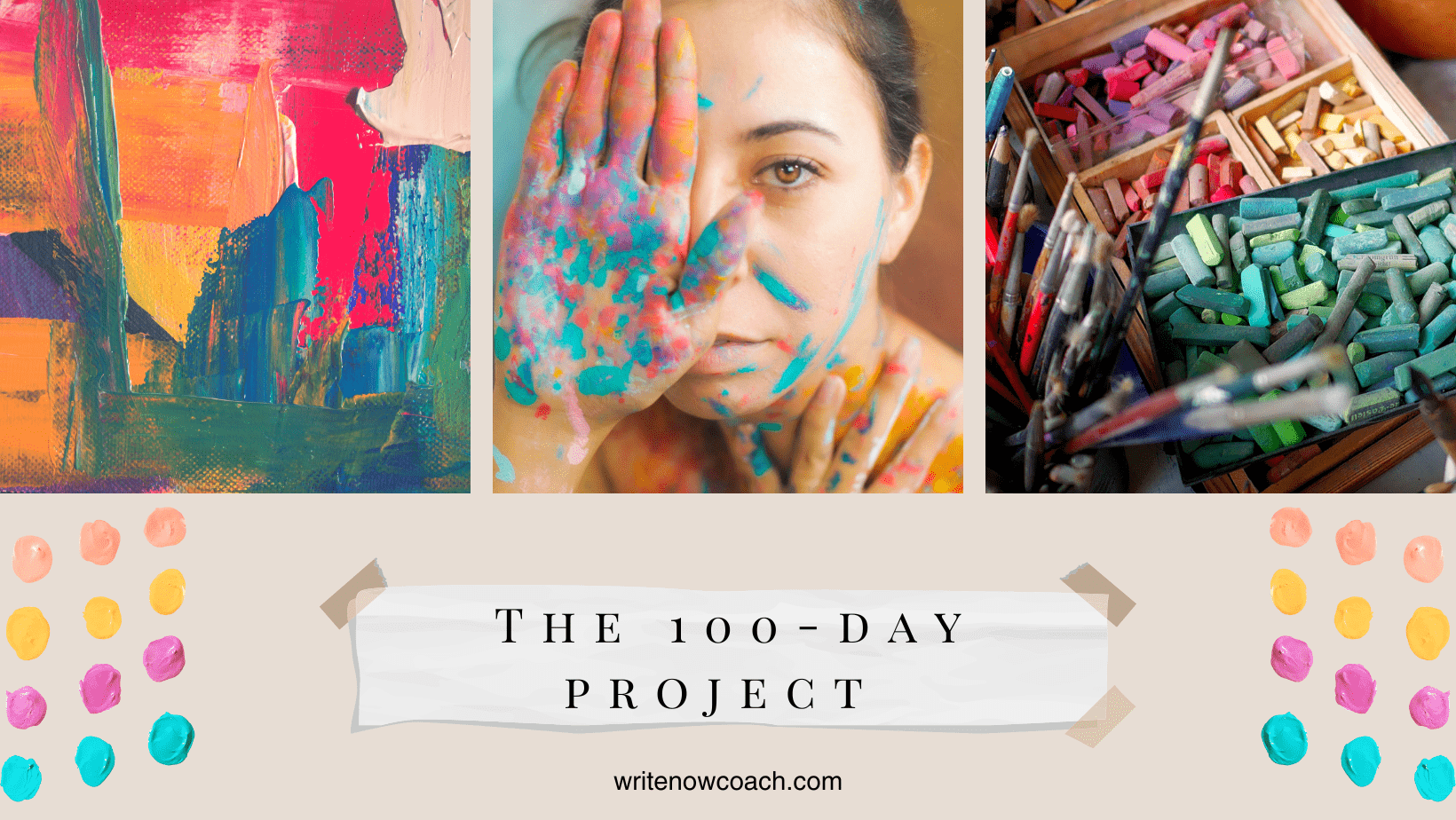The 100-Day Project
by Rochelle Melander
I’m always looking for something to spark my creativity and help me think differently about writing. When I happened across the 100-day project this past week, I felt that little zing: perhaps this could be it. Perhaps this could be the thing that helps writers get out of a slump. Read on to learn what it is and how to make it work for you.
What it is
Starting February 18, 2024, artists commit to doing something daily for 100 consecutive days. The creative task should take 5 to 15 minutes. Many participants share their work on Instagram with the hashtag #the100dayProject. But despite this, the focus of the project is process versus product.
How it started
Yale graphic design professor Michael Bierut assigned the 100-day project to his students: choose a design operation and repeat it daily. At the end of the 100 days, present it to class. The students created fascinating projects from the raw materials of life: 100 poems based on paint chips, dances in different places, sketches, photographs and more.
Why join in
I’ve done National Novel Writing Month more times than I can count. I love how the challenge connects me to my writing and the community. Plus, even when I don’t “win”—complete a 50,000-word book in a month—the challenge gives me a jumpstart on my work. I imagine the 100-day art challenge provides similar benefits.
How writers do it
Any way you want. Seriously. But if you need some guidelines, here they are.
+Choose a single, simple project. This isn’t the time to juggle three different writing projects. Think small. You could write a poem a day, sketch out a scene for your memoir, or write one short essay for your book. You might even write one line of dialogue a day or choose a word for the day.
+Keep it short. Write for 5-15 minutes a day. You can do that for 100 days. Don’t try to do 1-2 hours a day. It’s too much.
+Keep it contained. Write it on an index card, in a small notebook, on post it note, or a single computer document.
+Make it a habit. Tie your 5-15 minutes of writing to something you’re already doing each day. This might mean you write after your morning cup of coffee or right after dinner. Maybe you dictate a short memory while you take your morning walk. Or you take five minutes after lunch to discover and jot down a new word.
Your turn
How will you make the 100-day project work for you? Artist EB Hawks suggests brainstorming project ideas—when the right one shows up, you’ll know it. Other artists have used it to stretch their skills, strengthen a particular skill, or learn a new technique.
For more information
You can read more about it and sign up for the newsletter at https://www.the100dayproject.org/
If you are a social media type, follow them on Instagram @dothe100dayproject. Search the hashtag #The100DayProject to find and follow other artists who are participating.
Here are some great posts to help you:









